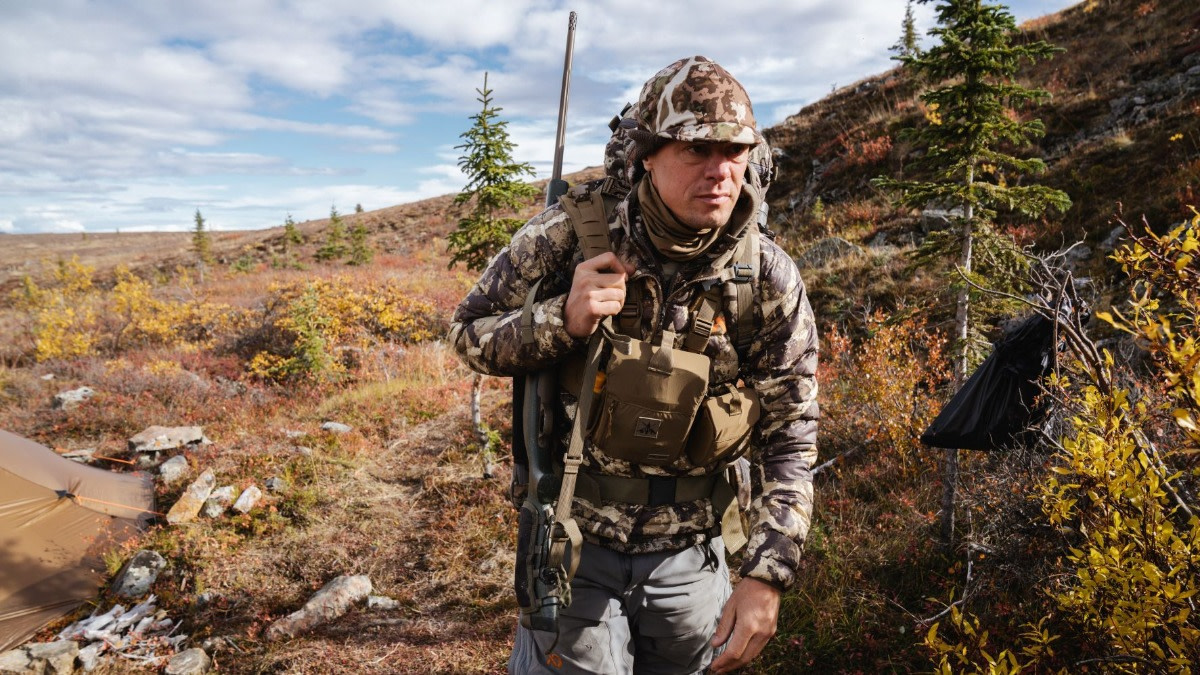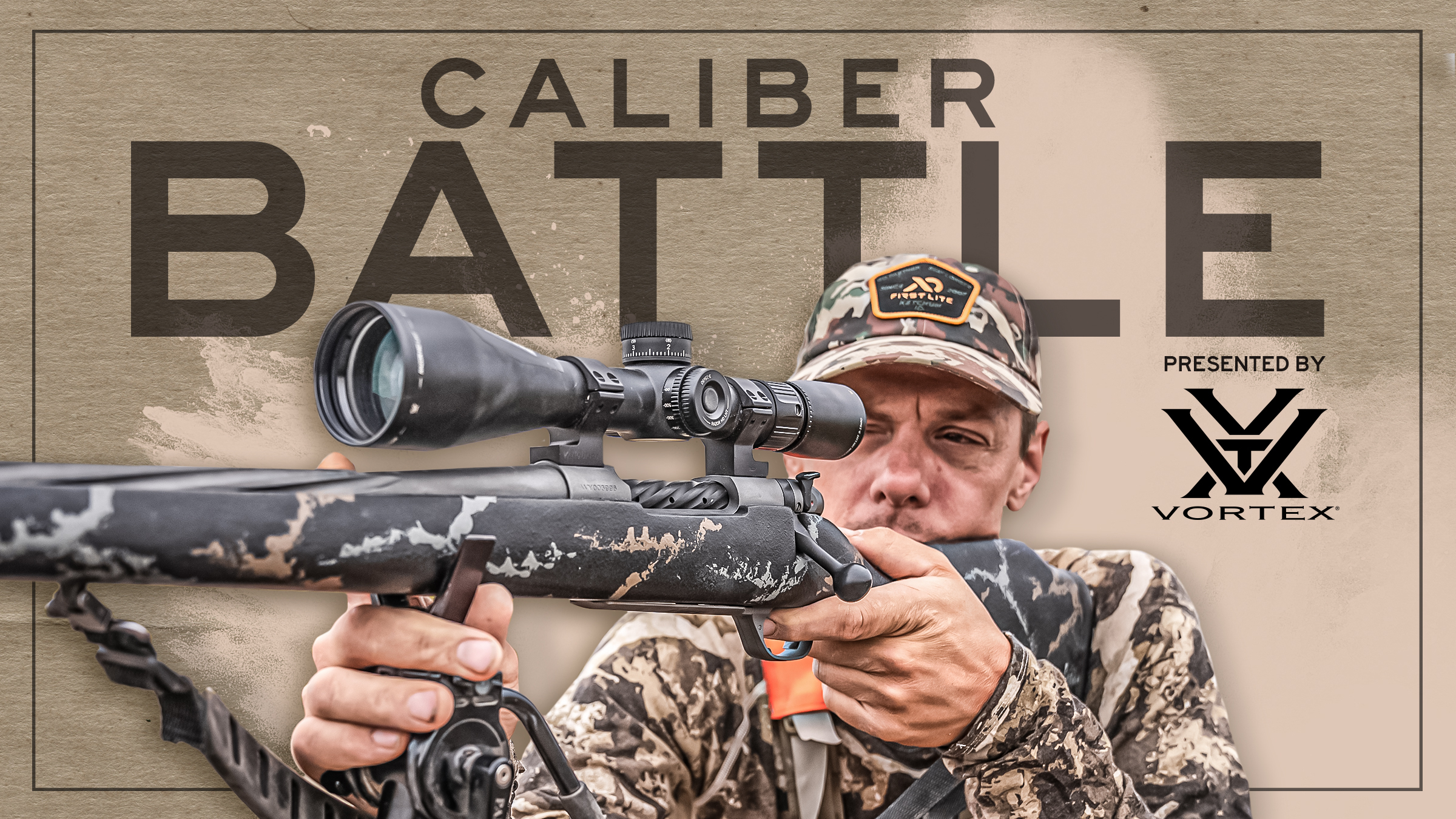
For all the bickering between fans of the .308 Winchester and the 6.5 Creedmoor, both cartridges represent similar philosophies of ammunition optimization (hang with me; we’ll get to the .300 Win. Mag in a second).
Both the .308 and the 6.5 seek a balance between power, size, and recoil energy, and both were developed as high-tech new offerings that saw broad success on the competition circuit. Rather than maximizing power above all else, these cartridges offer sufficient power for most big game animals in a manageable, small-action package.
The .300 Winchester Magnum is the opposite of that measured approach. The Win. Mag. is among the most powerful .30-caliber cartridges on earth, and it was designed to take out large animals at long distances—recoil be damned.
Comparing the Win. Mag. to the .308 tastes a bit like apples and oranges, but it’s one of the most frequently searched matchups on the Internet, and I’m here to give the people what they want.

Ballistics
If the .308 Win. case was like Mary Poppin’s magic bag, then it might be able to compete with the .300 Win. Mag.’s power. But it isn’t, and so it can’t.
Both cartridges fire .30-caliber bullets in the 150- to 180-grain range, but the Win. Mag.’s case is 30% longer and almost 10% wider. That extra case capacity gives the .300 Win. Mag. the power and trajectory advantage in almost any conceivable matchup—and the competition isn’t even close.
For example, when firing 165-grain Trophy Copper bullets, the .308 Win. achieves a muzzle velocity of 2,700 feet-per-second (fps) and a muzzle energy of 2,671 foot-pounds (ft.-lbs.). The bullet is still traveling fast enough for reliable bullet expansion at 500 yards (1,800 fps), and it’s dropped about 47 inches at that range with a 200-yard zero.
If you know anything about big-game cartridges, you know that’s not too shabby. But the .300 Win. Mag. still has it beat.
Using the same 165-grain Trophy Copper bullet, the .300 Win. Mag. hits 3,050 fps at the muzzle and produces 3,408 ft.-lbs. of energy. At 500 yards, the bullet is still traveling about 300 fps faster than the .308 Win. and has dropped 10 fewer inches.
If you want a .300 Win. Mag. that mimics the velocity and trajectory of the .308 Win., you have to bump the bullet weight all the way up to 200 grains. Even then, as with these 200-grain Terminal Ascent bullets, the .300 Win. Mag. is traveling 200 fps faster and has dropped six fewer inches at 500 yards than the 165-grain .308 Win. referenced above.
Bottom line? While the .308 Win. and the .300 Win. Mag. can be loaded with the same bullets, the .300 Win. Mag. can produce about 15% more velocity and power all the way down the line.
Winner: .300 Win. Mag.
Shootability
If the .300 Win. Mag. is such a powerhouse, why does anyone shoot the .308 Win? One word: recoil. “With cartridges in this class and above, recoil becomes a factor for many shooters,” Frank C. Barnes notes of the Win. Mag. in “Cartridges of the World.”
And that’s a bit of an understatement. Barnes doesn’t offer that caveat in his description of many other cartridges, which I read as an acknowledgment of the discomfort most hunters experience shooting the magnum round.
Don’t get me wrong: the .308 Win. isn’t a cakewalk. Producing 18 ft.-lbs. of energy with a 165-grain bullet and a 7.5-pound rifle, the older Winchester cartridge flirts with an uncomfortable line. Anyone who’s spent an afternoon practicing with a lightweight hunting rifle chambered in .308 can attest to the shoulder pain that usually ensues.
But the .300 Win. Mag. is on another level. Shooting a 165-grain bullet out of an 8-pound rifle, a .300 Win. Mag. produces about 26 ft.-lbs. of recoil energy. That’s about 44% more recoil than the .308 Win. example referenced above but with a heavier rifle.
The .300 Win. Mag. has been an exceptionally popular big-game cartridge, and many hunters don’t find the magnum particularly uncomfortable. Others are happy to absorb a little shoulder pain if it means increasing their chances of downing an animal.
But new or sensitive shooters will want to take a few practice shots before purchasing a .300 Win. Mag. rifle. Developing a flinch is one of the worst things that can happen to a rifle hunter, and as we’ve pointed out many times before, you’ll have more success with a less powerful cartridge you can shoot accurately than a bazooka you can’t.
It’s also worth noting that the .308 Win. is significantly less expensive, both for hunting cartridges and practice rounds. This 165-grain Trophy Copper option from Federal runs about $58 for a box of 20 while the 165-grain .300 Win. Mag. Trophy Copper cartridges are $73 per box. If you’re looking for practice rounds, you can find .308 for as little as $1 per round, but you’ll pay at least $1.70 per round for .300 Win. Mag.
Winner: .308 Winchester
Versatility
The great thing about .30-caliber bullets is that they come in a wide range of weights and applications, and both cartridges take full advantage of that versatility.
For the .308 Win., Barnes notes factory loads ranging from 110 grains to 220 grains, though the vast majority of options fall in the 150- to 180-grain weight class. The .300 Win. Mag. boasts the exact same range—from 110-grain varmint loads to large game options loaded with 220-grain bullets.
That versatility is possible if you shop around online, but your local sporting goods store is unlikely to stock many .300 Win. Mag. options loaded with 110-grain bullets. Likewise, it’s difficult to find .308 Win. cartridges loaded with bullets heavier than 180 grains.
So, while both cartridges can theoretically run the gamut between varmints and very large game, the real-world offerings are more likely to favor the .308 Win. for varmints and the .300 Win. Mag. for anything that needs a bullet heavier than 200 grains.
And that really is the difference between these cartridges. The .300 Win. Mag. is great at firing heavy bullets really fast, which offers exceptional downrange power and a super-flat trajectory. If you’re hunting moose or brown bear, the .300 Win. Mag. will give you more flexibility. The .308 Win., on the other hand, doesn’t offer as much power but is a better (or at least, more attainable) option in the “varmint and predator” category.
It's tough to suss out which cartridge is truly more versatile, but much like the Caliber Battle between the .308 Win. and the .30-06, the .308 offers far superior firearm selection. Along with the standard bolt-action hunting rifle, the .308 Win. can be had in semi-auto, pump, and even lever-action rifles. You might find the Win. Mag. chambered in some of these other actions, but they’re few and far between.
That gives the very slight edge in this category to the .308 Win.
Winner: .308 Winchester
And the Winner Is…
Comparing apples to oranges always makes it tough to choose an overall winner. The best option for you depends on what you hunt and where, but if you’re an average American hunter, you probably hunt whitetail, black bear, elk, coyotes, or hogs. For any of those species, the .308 Win. is the better option. It offers more than enough power, but its lighter recoil makes it easier to shoot accurately, and its lower cost keeps more money in your pocket to spend on other hunting gear.
If you plan to shoot a moose or grizzly bear from 300 yards, or any big game at distances greater than 500 (which we don’t recommend), the .300 Win. Mag. is the price you’ll have to pay. Otherwise, stick with the .308.
Overall Winner: .308 Winchester



